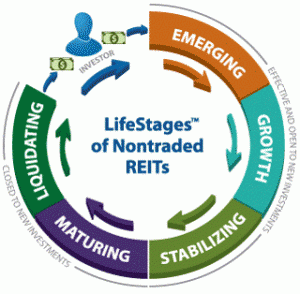We are transitioning our login authentication platform over the holiday weekend.
July 2 – 6: You will be unable to change your password, and we will be unable to create new user accounts.
July 3 – 6: Public-facing pages of our website will remain available, but you will not be able to log in to access data.
July 3 – 6: The Blue Vault store is closed for new Memberships.

Total Asset figures are from the last quarter reported for active programs and are the average total assets for full-cycle programs over their respective lives.
Equity capital raised during offering periods, including DRIP proceeds.
Full-Cycle (Date): Shareholders received cash or listed stock for all common shares of the previously non-traded investment program as of the given date.
In-Process: The investment program has commenced liquidation of its investment portfolio, has announced a merger or sale that has not yet been consummated, or has yet to provide common shareholders with full liquidity for their shares with cash and/or listed stock.
SRP/Tender: Share repurchase or tender program which permits shareholders to sell their shares back to the company, subject to limitations. The frequency, price, and limitations vary by investment program.
Suspended: The investment program has suspended its share repurchase or tender program.
None: The investment program does not have an intermittent liquidity program, but shareholders will receive liquidity upon termination or liquidity event at the end of the investment term.
